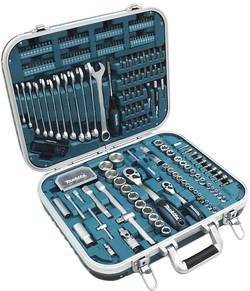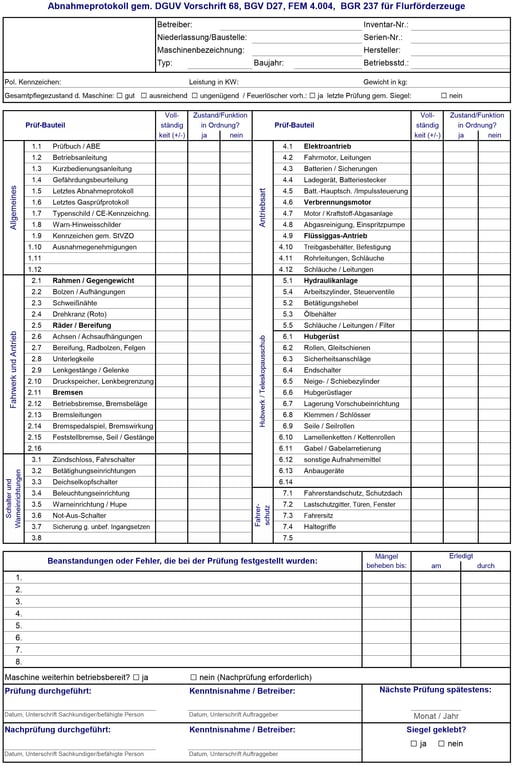Maintenance plans for the maintenance of your machines & systems
Updated: 26.04.2022 | Reading Time: 6 minutes
This text is machine translated.
Machines, building technology and production facilities are durable capital goods with often high acquisition costs. This means that maintaining, repairing and overhauling equipment, systems and objects is of great economic importance.
Regular maintenance ensures that appliances, once purchased, work reliably and function faultlessly over their planned service life.
Maintenance planning helps to make better use of the service life and avoid breakdowns due to unplanned maintenance work. Service inspections are also relevant from an economic point of view.
Routine replacement of wearing parts keeps repair costs low and at the same time increases the overall availability of the system. Preventive maintenance is also essential for the operational and traffic safety of the machines.
Maintenance plan - why is it needed?
There are tools to ensure that maintenance is carried out on time and to the right extent. The most important of these are the maintenance and service plans, which are created individually. The plans support your company in the inspection and maintenance of machines and technical systems of all kinds. The maintenance plan or service plan is an indispensable tool with which you can efficiently organize and monitor the inspections in your company.
It serves as a work order, roadmap and checklist for service, plant engineering, production or electrical specialists as well as for all employees involved in maintenance and repair.
As part of the operational maintenance and servicing strategy, maintenance plans enable companies to plan and carry out the necessary processes. They shorten service times and help to carry out inspections and tasks without errors.
Service and maintenance plans also enable a quick response in the event of defects and help employees when converting devices or changing system configurations. As a training tool, the plans shorten the induction phase for new service staff and help when creating an order for external maintenance service specialists.
Internally, the plans serve as proof of conscientious system maintenance the management, superiors and other departments. Externally, the plans help to enforce warranty and recourse claims against manufacturers, external service providers or insurance companies.
The maintenance plan or service plan lists all planned maintenance of an appliance or system in accordance with the specifications of the respective manufacturer or your company. The plan essentially contains a list of the devices, systems and assemblies that require regular inspection.
The maintenance plan usually contains precise information on the individual machines in the company, such as name, location, date of purchase, use and/or service life as well as the type and scope of the service interval. The plan also includes the date of the last service and the target date for the next service, the responsibilities, the service contact person and other information tailored to the individual organizational structure of your company.
Particularly important for the service plan are the work order with detailed information on the planned maintenance work and the inspection points to be taken into account. These result from the design of the appliances and their functions, the type of use and the actual stress caused by use, wear and age of the machine.
As part of the condition assessment and diagnosis, an inspection primarily involves checking, cleaning and, if necessary, replacing components that are known to show wear and tear. The inspection also includes parts that require auxiliary materials such as lubricants or are safety-relevant.
There are other reasons to include the performance of certain service tasks in a maintenance plan. These include legal regulations, hygienic and ecological aspects, company-specific requirements as well as economic considerations and the safety of operating personnel.
However, the days when a maintenance plan only existed in paper form and, in the worst case, lay dormant in a drawer are definitely over. Nowadays, lists are often created in Excel in which the individual items are listed, or in-house database systems such as SAP are used. SAP software offers a maintenance module in which maintenance plans can be created with all items and objects.
Every maintenance plan includes precise maintenance instructions, such as which tools are to be used for the inspection or work order, which calibration is required and which parts should be replaced.
The maintenance plan is then used to determine the maintenance program to be carried out by the service technicians.
The entries in a well-managed maintenance plan thus ensure that every machine or system receives the right treatment and the right spare parts.
The person responsible for maintenance documents the inspection carried out, the result of the measure and the parts replaced. The countersigning of the entries in the maintenance plan by supervisors or managers in accordance with the dual control principle ensures service quality. If necessary, another employee can check the maintenance measures carried out for quality assurance purposes.
The maintenance costs over the planned service life of machines and systems are a significant economic factor with optimization potential. The C-goods required for maintenance include machine or system-specific spare parts, wear parts, cleaning agents, lubricants and the tools and aids required for maintenance.
For economic reasons, more and more companies are dispensing with costly warehousing of spare parts. Instead, the parts for the order are ordered as required, usually at irregular order frequencies and from different suppliers. The C-parts themselves are often of little material value. However, the transaction and logistics costs associated with ordering often drive up the actual parts costs. It is therefore a good idea to review your current cost structure for C-parts.
Minimizing maintenance costs requires a cost-effective, reliable and fast source of supply for the required parts. The service plans and maintenance schedules form the basis for more efficient spare parts ordering. They list all the products you need to service, maintain and repair the machines in your business. The only thing missing is a suitable single-source supplier from whom you can bundle all orders to save costs. And this is where Conrad comes into play: As an industry partner and authorized distributor with the greatest possible flexibility and independence, Conrad offers you tailor-made service and procurement solutions and a constantly growing range of quality products.
In Conrad's central store system, you and your team can order all the consumables and goods you need electronically, quickly and conveniently at the desired delivery time to the desired delivery location. Tailored to the individual processes in your company, users can place their parts with or without the involvement of the purchasing department. You and your employees receive personal support from our team of Conrad product experts at any time.
At Conrad, you receive a wide range of products optimally tailored to your needs and have the choice between strong brands with certified quality standards. The high availability of goods and delivery directly to the site where the parts are needed ensure short delivery times and minimize the logistics effort in your company. The order status can be called up from anywhere at any time.
If required, your parts can be procured from Conrad in a controlled manner with a high degree of automation. Known items land in your shopping cart in seconds via direct ordering. Scheduling and call-off orders allow you to plan your deliveries with foresight and in line with demand. With the intelligent purchasing solution Conrad Smart Procure, you can map the usual purchasing processes in your company to an electronic shopping cart.
If your employees use their own procurement system, Conrad's eProcurement service is of interest to you. Conrad provides B2B customers with digital catalogs tailored to their own requirements.
Whichever ordering option you choose: With Conrad as your business partner, you reduce the coordination effort and process costs associated with the procurement of goods. You can adhere precisely to your maintenance plans and save on goods in the long term.
Maintenance plans are dynamic
Production systems, the associated equipment, operating fluids, interfaces and software components are constantly being developed further. Accordingly, manufacturers of technical equipment are constantly adapting the maintenance specifications for their devices to technical innovations or changes in spare part components. Make sure that you incorporate the changed manufacturer specifications into your maintenance plans in good time. The tool lists and wear parts overviews in the maintenance tables should also be adapted to the current manufacturer specifications.
Maintenance and maintenance planning are essential components for smooth operations. Risky downtimes are reduced and there is comprehensive documentation for the necessary work, tasks and measures. This documentation is important for planning the personnel required, the time needed and the procurement of the necessary spare parts. This allows the work to be carried out promptly without significantly disrupting the company's processes and functions.
In addition, you always have an up-to-date overview of the costs incurred for maintenance at regular intervals. You can recognize immediately if the maintenance costs for a machine or system are outside the usual range and have the opportunity to react before an impending cost explosion.




